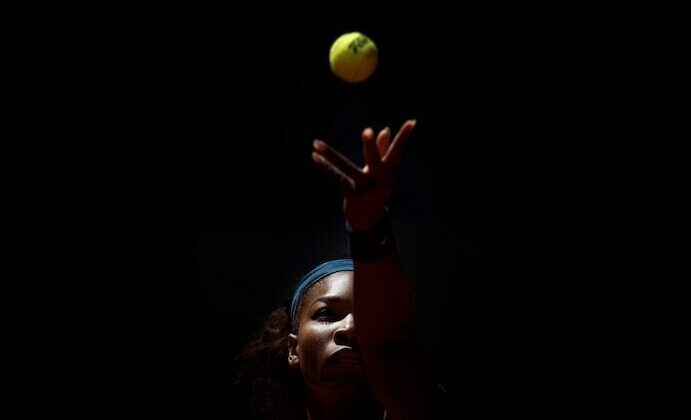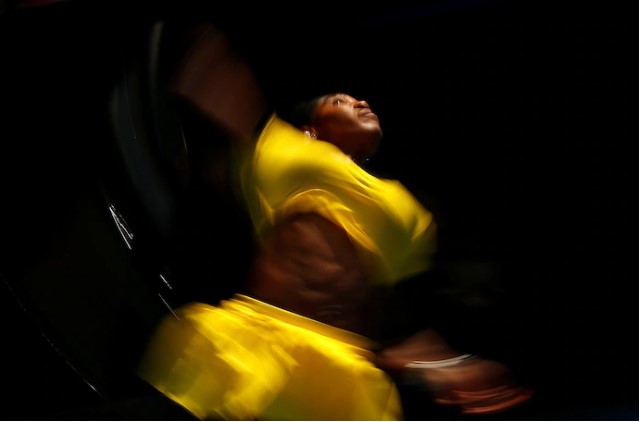
The Serena Effect changed every aspect of women’s tennis
The revolution Williams wrought started with the unparalleled power she brought to the women’s game and the competitive ferocity that forced other women to find their own — if they wanted to have a chance against her.Now 40, she has reset earnings expectations for top female athletes, as well, with her record $94 million in career winnings on the court.
She also has shattered notions of what tennis champions look like, how they dress and comport themselves. She has inspired the next generation of girls and boys to believe tennis was their sport, too, if that’s what they wanted.
Said former U.S. Tennis Association president and CEO Katrina Adams, a former pro herself: “Serena’s presence in our sport revolutionized tennis. She transformed it to what it is today with her power, with her grit, with the perseverance and determination and with her fashion. She left it all out on the court with a never-say-die-attitude whenever she was down in a match.”
Rafael Nadal, 36, hailed Williams as a “legend” and “ambassador” for sports during his pretournament news conference this weekend.
“I think [of] her as an athlete … not just a tennis player,” said Nadal, who counts four U.S. Open titles among his men’s record 22 majors. “From the tennis perspective, it’s a big loss that she is leaving. But on the other hand, she deserved all the things that she achieved because she worked enough to make that happen for such a long time, with a lot of determination, dedication, discipline. If not, all of this is impossible. So now is the moment that she deserves to choose whatever she wants to do.”
If this U.S. Open is Williams’s last star turn, as she intimated in a recent essay in Vogue, explaining why she is “evolving away from tennis” as she approaches her 41st birthday, it will be a fitting bookend.
Williams won the first of her Open-era record 23 majors here at age 17.
Though reared in Compton, Calif., where her father and mother taught her and sister Venus to play on hardscrabble public courts amid a backdrop of gang violence, Arthur Ashe Stadium, the world’s biggest tennis venue, has always brought out an extra dimension in this born fighter and born entertainer.
The 23,771-seat Ashe Stadium at USTA Billie Jean King Tennis Center has been the setting of six U.S. Open triumphs by Williams as well as controversy — some not her own making and some she compounded — amid gut-spilling efforts to tap every shot and psychological tactic in her repertoire to send rivals packing.
A ratings bonanza

It seemed the height of hyperbole when Richard Williams predicted nearly four decades ago that his youngest daughter, Serena, would be an even greater tennis player than his daughter Venus. Both, he said, would one day be the world’s best.
He proved prophetic.
What the sisters achieved individually and in tandem has been without precedent in sport. Venus reached No. 1 in the world in February 2002. Serena ascended to No. 2 that June. And in July, the order flipped, with Serena No. 1 and Venus No. 2.
“They could knock the cover off the ball and run down every shot,” tennis historian Steve Flink recalled. “And they had the two best serves in the game.”
For one stretch in 2002 and 2003, Venus and Serena met in the finals of five out of six majors. Serena won them all and, in doing so, held all four Grand Slam titles at the same time to complete what she dubbed a “Serena Slam.”
She had announced herself to most tennis fans at 17, in the 1999 U.S. Open, knocking off defending champion Lindsay Davenport, among the era’s biggest hitters, to reach her first Grand Slam final.
Asked about her fears on the eve of the championship match, Serena said: “I fear no one. I only fear God.”
The next day, she upset world No. 1 Martina Hingis to win her first Grand Slam.
As S.L. Price characterized Serena’s coming-out party in Sports Illustrated: “Historic shifts hit tennis like hurricanes; you see them coming, but never know exactly where or when they’ll make landfall. Suddenly, at this Open, the future came blowing in.”
Serena was the future of women’s tennis. And she was a ratings bonanza, with CBS reporting its ratings had doubled from the previous year’s women’s final.
That pattern held throughout Serena’s career, according to ESPN vice president Jamie Reynolds, who oversees the network’s production of tennis.
“It is akin to the ‘Tiger Effect’ in golf — the bump in interest based on whether Tiger was in the field or not,” Reynolds said. “That’s what it’s like when Serena is in the field.
“… The trend we typically see when Serena is involved and goes deep in a tournament is that the ratings for those matches can easily double. That’s the general rule of thumb for us.”
Said Hall of Fame inductee John McEnroe, on what has made Williams must-see TV: “All you need to say about Serena is that she’s put herself in that pantheon of GOATs of GOATs.”
‘A savage fighter’

Any analysis of what places her in that pantheon starts with power — of her groundstrokes and especially her serve.
In the serve-and-volley era of women’s tennis that preceded Williams, the convention was to use a well-placed serve to start a point.
Serena, like Venus and a handful of heavy hitters, used the serve to win a point.
While its sheer velocity, hurtling at upward of 128 mph, was enough to knock most opponents back on their heels, the clinical mechanics of Serena’s serve was its real genius.







